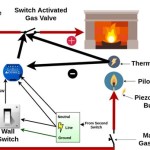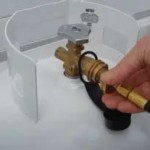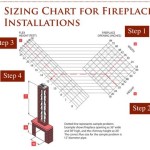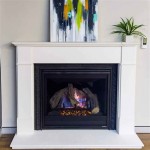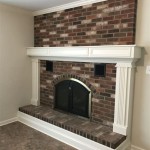Cost of Converting a Gas Fireplace Back to Wood-Burning
Many homeowners enjoy the ambiance and supplemental heat that a fireplace provides. Over time, some fireplaces are converted from wood-burning to gas for convenience and perceived efficiency. However, circumstances can change, leading homeowners to consider reverting their gas fireplace back to its original wood-burning state. This conversion process involves a series of steps and considerations, each contributing to the overall cost. Understanding these factors is crucial for budgeting and making an informed decision.
The cost of converting a gas fireplace back to wood-burning can vary significantly, typically ranging from a few hundred to several thousand dollars. The primary factors influencing this price include the condition of the existing fireplace, the complexity of the necessary modifications, local building codes, and professional labor rates. A fireplace that has been poorly maintained or significantly altered during the gas conversion will naturally require more extensive and costly work.
One of the first steps in the conversion process is a thorough inspection. A qualified chimney sweep or fireplace technician should assess the current state of the fireplace and chimney. This inspection will identify any existing damage, such as cracks, deteriorated mortar, or blockages, which need to be addressed before the fireplace can be safely used for wood-burning again. The inspection may also reveal whether the existing chimney liner is suitable for wood smoke, as gas and wood fireplaces have different ventilation requirements.
Building codes and safety regulations play a significant role in determining the necessary work and associated costs. Wood-burning fireplaces are subject to stricter regulations than gas fireplaces, particularly regarding chimney liners, firebox construction, clearances to combustible materials, and the presence of a functional damper. These regulations are designed to minimize the risk of fire and carbon monoxide poisoning. Therefore, compliance with these codes can add to the overall expense of the conversion.
Chimney Inspection and Repair
The chimney is a critical component of a wood-burning fireplace system. Its primary function is to safely vent smoke and combustion gases out of the home. A chimney that is damaged or improperly constructed can pose a serious fire hazard. A common problem with fireplaces that have been converted to gas is that the original chimney liner may have been removed or altered. Gas fireplaces often use a smaller, flexible liner, which is not suitable for the high temperatures and corrosive byproducts of wood smoke. Wood-burning fireplaces require a more robust liner, typically made of clay tiles, stainless steel, or cast iron. Replacing or repairing a chimney liner can be a significant expense, ranging from $1,500 to $5,000 or more, depending on the height of the chimney and the material used.
The inspection should also identify any cracks or deterioration in the chimney's masonry. These issues must be addressed to prevent smoke and gases from leaking into the home. Repairing or repointing the masonry can cost several hundred to several thousand dollars, depending on the extent of the damage. In severe cases, the entire chimney may need to be rebuilt, which can be a very costly undertaking.
Another aspect of the chimney inspection is verifying that it is properly sized for the fireplace opening. An undersized chimney can lead to poor draft, causing smoke to back up into the house. An oversized chimney can result in excessive heat loss. If the chimney is not the correct size, modifications may be necessary, which can add to the conversion cost.
Furthermore, the chimney cap should be inspected to ensure that it is in good condition and effectively prevents rain, snow, and debris from entering the chimney. A damaged or missing chimney cap can lead to moisture problems and blockages, which can affect the fireplace's performance and safety. Replacing a chimney cap is a relatively minor expense, but it is an important part of the overall conversion process.
Firebox Modifications and Damper Installation
The firebox is the area where the wood is burned, and its construction is crucial for safe and efficient operation. If the fireplace was significantly altered during the gas conversion, it may be necessary to modify the firebox to make it suitable for wood-burning again. For example, some gas fireplace inserts require the removal of the original firebrick lining. If this is the case, the firebox will need to be relined with firebrick or a similar heat-resistant material. This can add several hundred dollars to the conversion cost.
Another important component of a wood-burning fireplace is the damper. The damper is a metal plate that can be opened or closed to control the airflow through the chimney. When the fireplace is not in use, the damper should be closed to prevent heat from escaping up the chimney. A functional damper is also essential for preventing drafts and keeping out rain and debris. Many gas fireplaces either have a permanently open damper or have had the damper removed altogether. Installing a new damper or repairing an existing one is a necessary step in converting a gas fireplace back to wood-burning. The cost of a new damper can range from $100 to $500, depending on the size and type.
In some cases, the firebox may need to be enlarged to accommodate a sufficient amount of wood. This can involve removing some of the surrounding masonry and reconstructing the firebox to a larger size. This is a more complex and costly modification, but it may be necessary to ensure that the fireplace can function effectively as a wood-burning unit.
The hearth, which is the non-combustible area in front of the fireplace, is also an important safety feature. The hearth should extend far enough out from the fireplace opening to protect the surrounding floor from sparks and embers. If the hearth is not large enough, it may need to be extended. This can involve adding new tiles, bricks, or other non-combustible materials to the existing hearth. The cost of extending the hearth will depend on the materials used and the size of the extension.
Gas Line Capping and Safety Checks
When converting a fireplace back to wood-burning, it is essential to properly cap the gas line that was used to supply the gas fireplace. This is a critical safety measure to prevent gas leaks and potential explosions. A qualified plumbing or HVAC professional should perform this task. The gas line should be capped securely and tested for leaks to ensure that it is completely sealed off. The cost of capping the gas line is relatively minor, typically ranging from $100 to $300, but it is a crucial step in the conversion process.
In addition to capping the gas line, it is also important to remove the gas fireplace insert or log set. These components are not designed for wood-burning and can pose a safety hazard if left in place. The vent for the gas fireplace needs to also be removed and the chimney needs to be inspected and cleaned. Ensure that there is no blockage.
After the conversion is complete, it is advisable to have a professional conduct a safety inspection to ensure that the fireplace is functioning properly and that there are no potential hazards. This inspection should include a draft test to verify that the chimney is properly venting smoke and gases. It should also include a visual inspection of the firebox, chimney, and surrounding areas to identify any potential problems.
Obtaining the necessary permits is another important consideration. Most municipalities require permits for fireplace modifications, and failing to obtain the proper permits can result in fines and delays. The cost of permits can vary depending on the location and the scope of the work, but it is typically a relatively small percentage of the overall conversion cost.
In conclusion, the cost of converting a gas fireplace back to wood-burning is influenced by a variety of factors, including the condition of the existing fireplace, the complexity of the necessary modifications, local building codes, and professional labor rates. A thorough inspection, proper repairs, and compliance with safety regulations are essential for ensuring a safe and efficient wood-burning fireplace.

Want To Convert Gas Wood Fireplace Full Service Chimney

Want To Convert Gas Wood Fireplace Full Service Chimney

Want To Convert Gas Wood Fireplace Full Service Chimney
Convert To A Beautiful Wood Burning Fireplace

Want To Convert Gas Wood Fireplace Full Service Chimney

Can You Convert A Gas Fireplace To Wood Burning Stove Direct Stoves Resources

How To Convert A Fireplace Back Wood From Gas Hunker

Convert Gas Fireplace To Wood
Can I Convert My Wood Burning Fireplace To Gas Woodlanddirect Com

How To Convert A Gas Fireplace Wood
Related Posts

